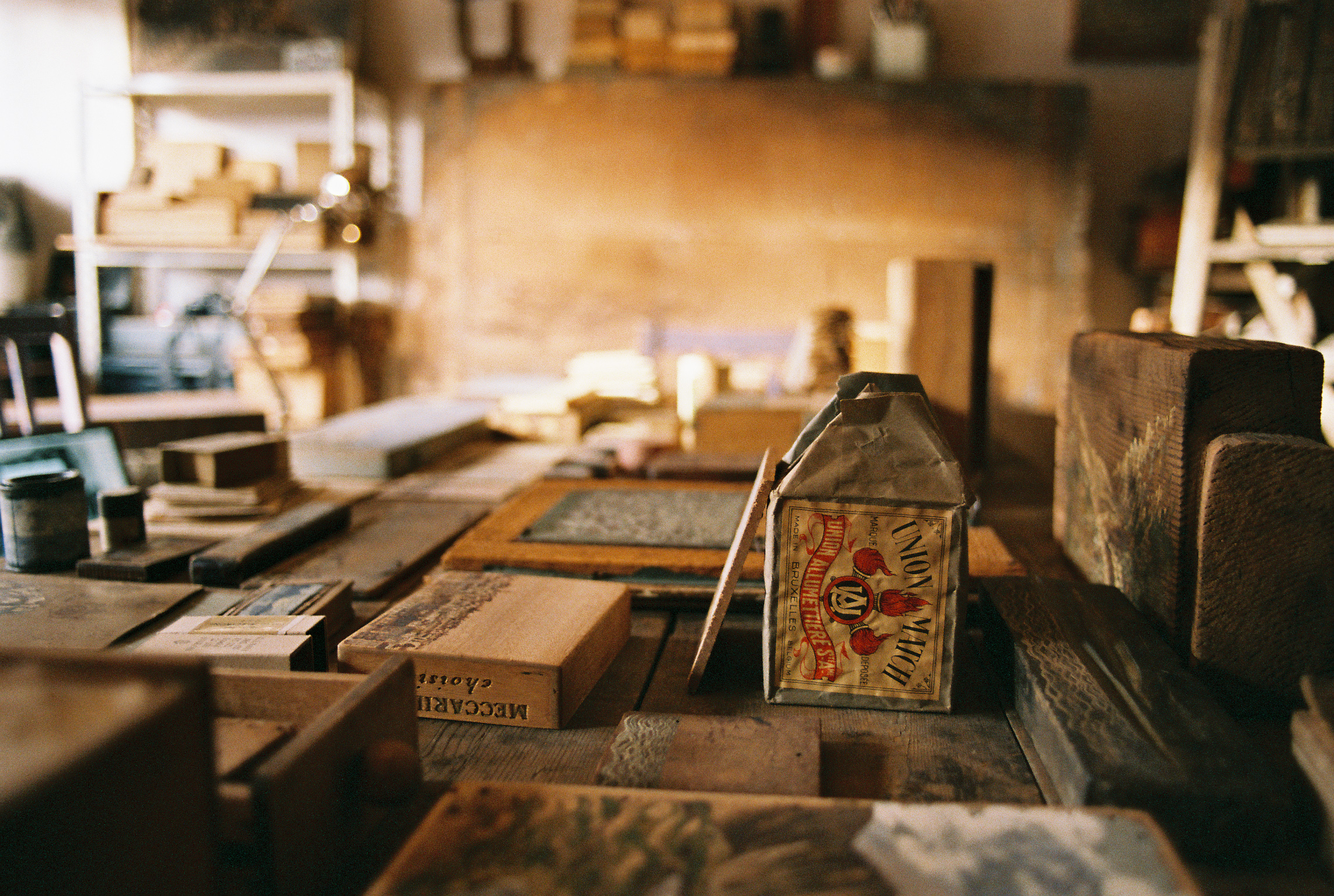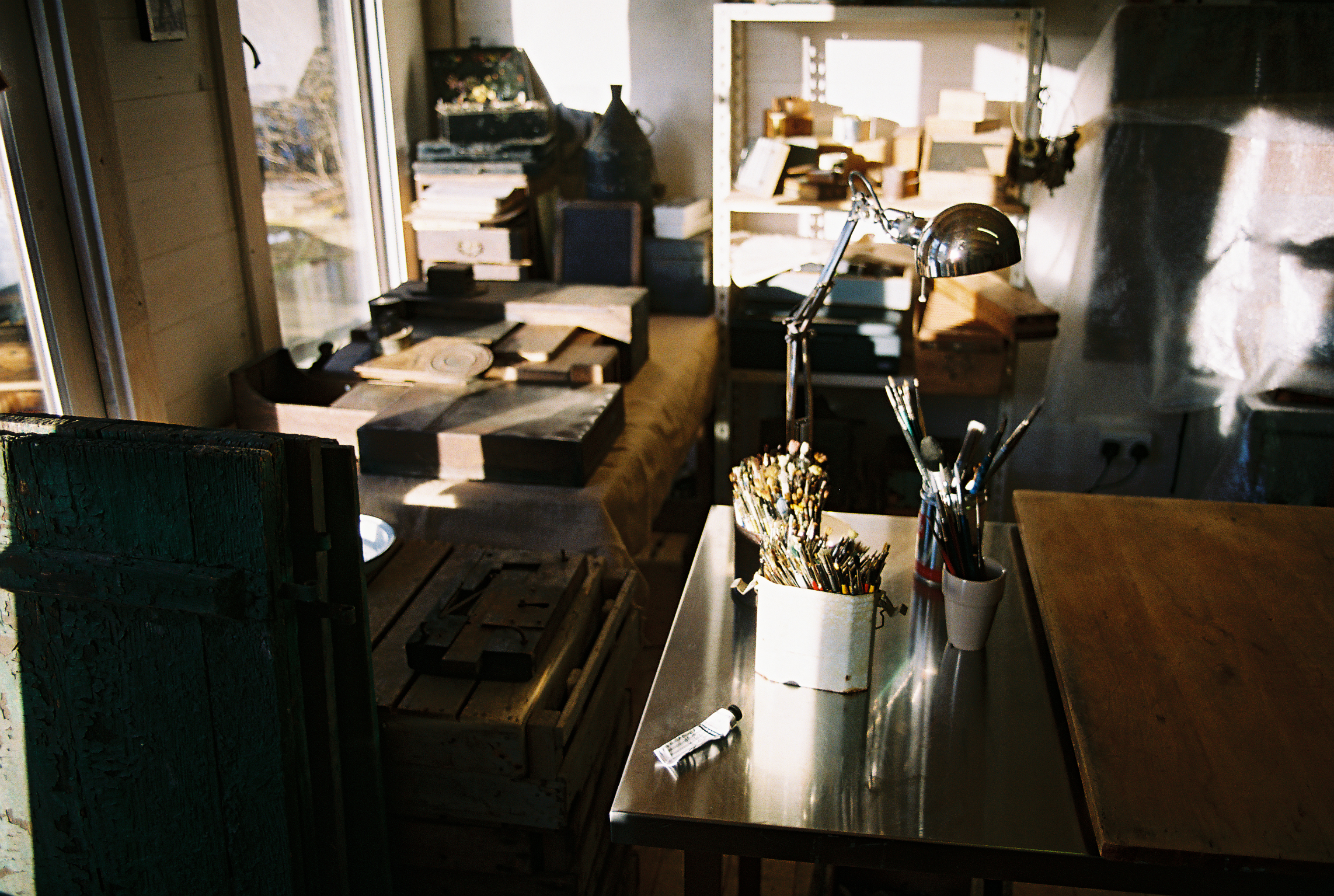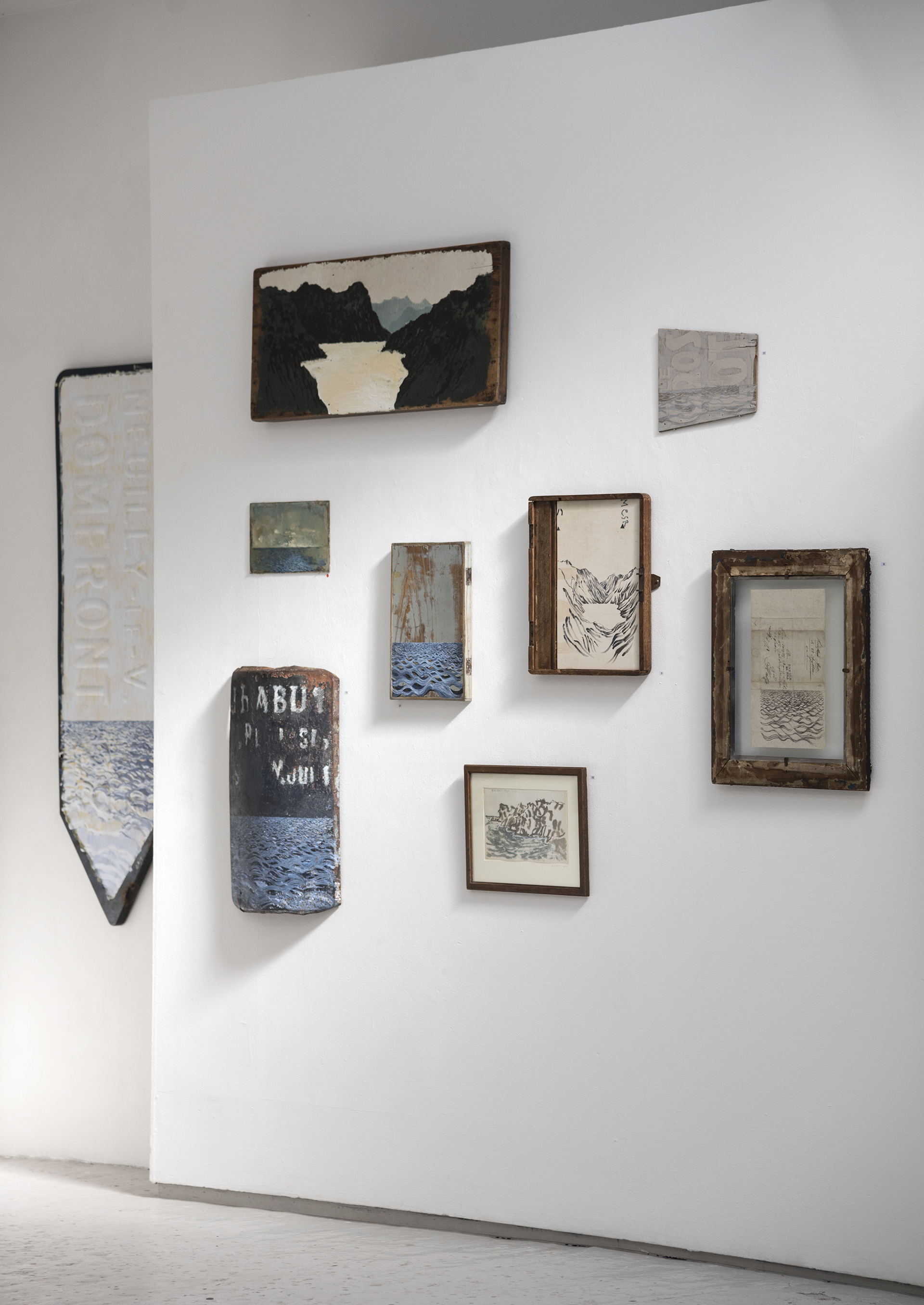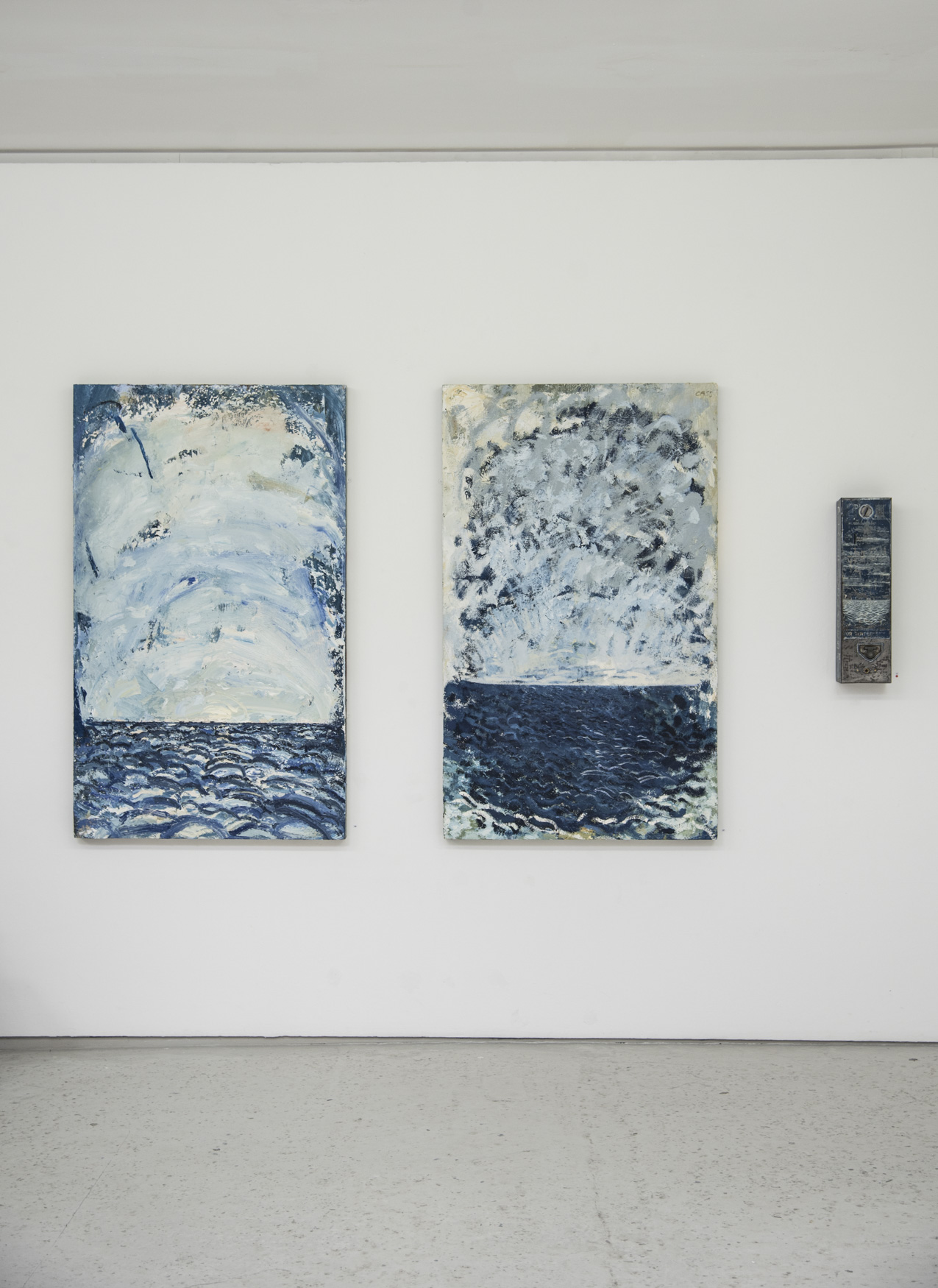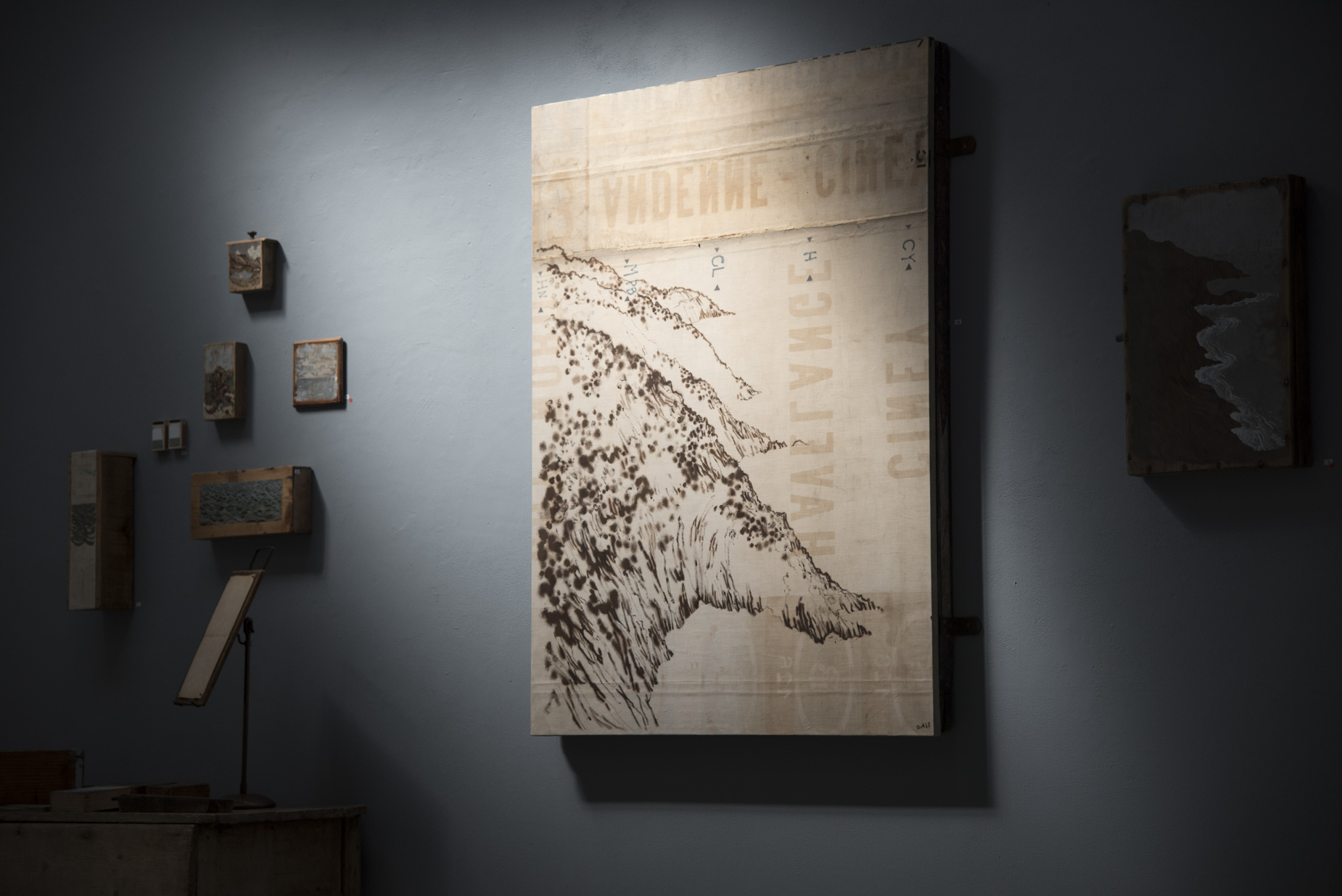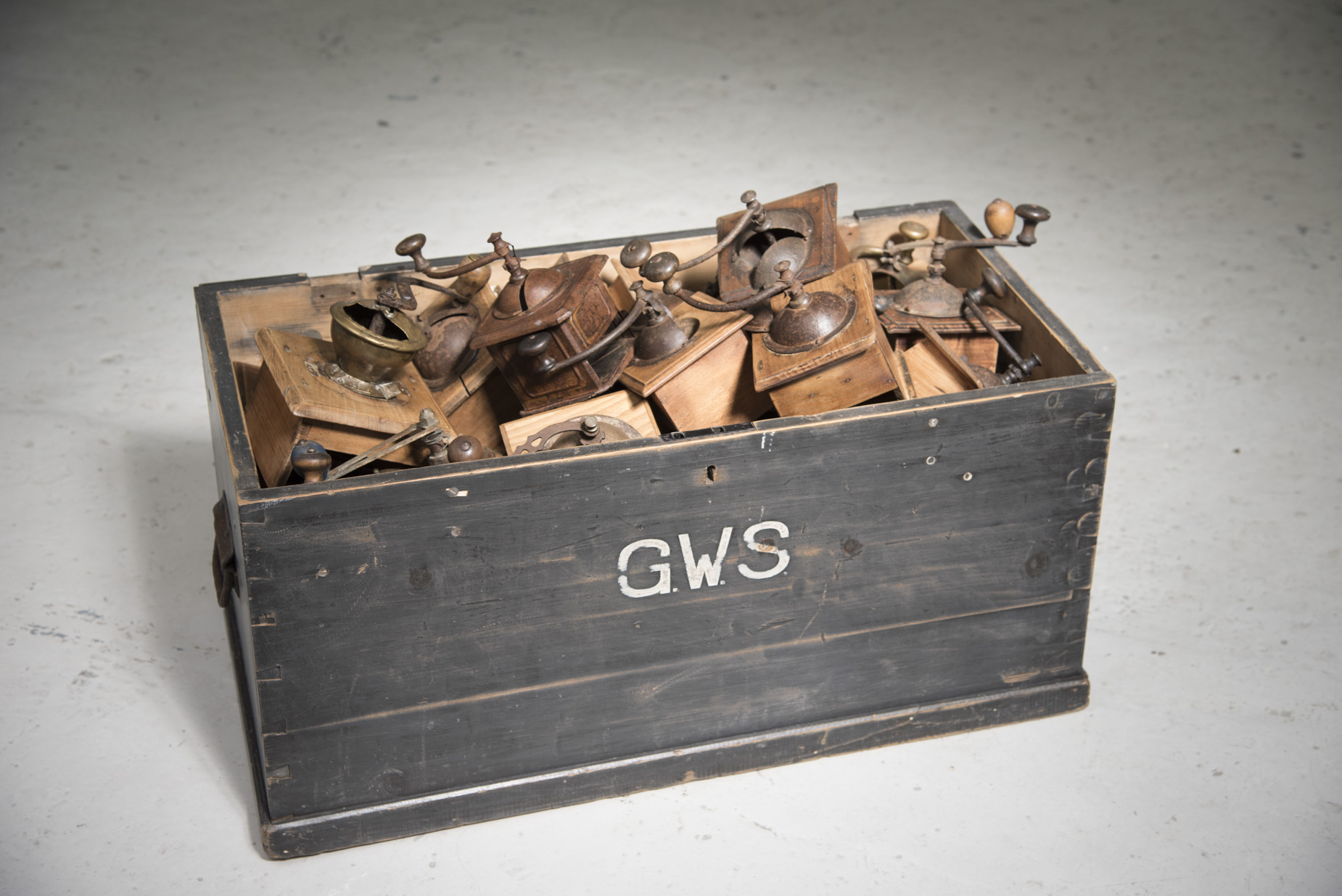A set of paintings that explore the concept of the surface. Created using non-traditional methods and painted on unconventional surfaces, these repetitive, layered artworks are unified by their exclusive depiction of water. From heavily layered oil paintings created outdoors over several years, to miniature gouache artworks painted on matchboxes or coffee grinder drawers.
The exhibition (and ongoing series) features images of water surveyed whilst travelling: the Atlantic from Cádiz, the Adriatic from Dalmatia, the Mediterranean from Liguria. Many too, are abstracted visions of the English Channel ('Mor breizh') - the strip of water I must cross to reach France, Belgium, Spain and Italy - where I source the materials and supports upon which I works. From Paris’ plethora of antique shops to Brussels’ frequent flea-markets, I source and gather every-day items (wooden, metal, and paper planes) suitable to be brought back to the studio and transformed into the foundation of each artwork.
These are artworks made from ordinary objects that speak of function and familiarity: tabletops, drawer bases, trunk lids, roadsigns, books & papers. Aged items and objects that describe a lifetime of use in their worn grains – a kind of repetition that is mirrored in the marks of each piece, the obsessive documentation of a singular subject.








